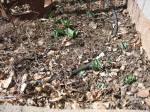You may wonder why it is a good idea to hire an Architect to design your residential landscape project, after all , it does add to the overall cost. But remember, you always get what you pay for. The consequences of an inexpensive pair of shoes may not be that great, but the problems encountered with a tree planted too close to your house or a flagstone patio that drains water up against your sliding glass door can be significant. When interviewing a potential landscaper for your project, ask them specific questions about their education, experience and references.
Landscape Designer or Landscape Architect?
An individual does not have to have any formal schooling to call themselves a designer, often they just have a few years of experience in making things look pretty. They usually do whatever the homeowner suggests, and they, the homeowner, often know even less about the landscaping process than the contractor does. I see many local projects that are not appropriate for our climate, they use trees and shrubs that do not thrive , use excessive amounts of bluegrass lawn, flagstone patios that are too small or too large and the list goes on and on. On the other hand, an architect will have an appropriate degree from a college or university and they will be glad to offer that information. A good architect will ask you many questions about how you intend to use your landscape.
- Do you need places for children or pets to play?
- How about entertaining, do you need an outdoor kitchen or just a spot for the grill?
- Do you enjoy working in the yard? Mowing the grass?
- Would you like to grow your own food?
Obviously the list of questions could (and should be) extensive, after all, the more they know about you and how you want to use your outdoor spaces the more likely their landscape design will be successful. You will have enough lawn to appease the neighbors and the kids to play on, but not too much to mow or be politically incorrect in our dry climate. Large trees will shade the patio in the heat of a summer afternoon but not block the winter sun from warming your house. A good landscape design will add thousands of dollars to the value of the property because it seamlessly integrates the house and it’s inhabitants with the outside and nature. Remember what Ben Franklin said so long ago” An Ounce of Prevention is Worth a Pound of Cure ” Get a landscape that works!
Cheers,
David Hart
Gardenhart Landscape & Design
970-749-1555
http://www.gardenhartlandscapedesign.com
Facebook for more sustainable landscaping tips.



